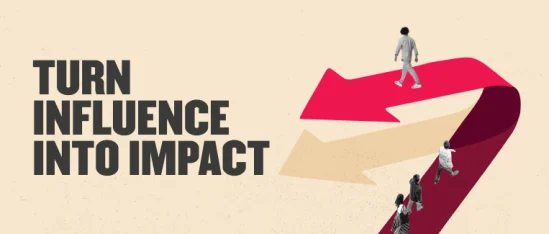This is a guest piece written by Louise Gilliland, executive team and leadership coach, consultant, and founder of Courageous Conversations.
We thought we had settled into a new normal after COVID. But as we mark International HR Day 2025, it’s clear that HR’s role is more critical (and more complex) than ever. It turns out, we are still figuring out how to design workplaces that work—remotely, locally, and across a globally distributed environment.
We thought we had reached a place of temporary economic stability. It turns out, we’re navigating the knock-on effects of a turbulent global economy in real time.
We thought we had all understood the importance of incorporating DE&I initiatives into our business strategies. Now, we’re being challenged to uphold these values amid evolving political and cultural debates.
And just as we thought we had the tools we needed to move our businesses forward, we find ourselves standing at the edge of a new technological frontier: AI. As AI’s power grows exponentially, we’re now asking: How can we harness it as an opportunity to deepen our focus on the areas that matter most?
Position HR as a business-critical function in a world of change
This International HR Day, we’re celebrating the impact of HR leaders around the globe—and asking an essential question: How will HR lead organizations through change?
As irritating as it might sound, change truly is the only constant, and it keeps coming in different forms.
Within this context, HR must position itself as a value-adding, business-critical function, not the “people police” or a service function.
You can either feel like a victim of this onslaught of change or proactively ask yourself: How can I influence, direct, and inspire a cohesive response—for myself and for the people across my organization?
Your personal resilience plays a critical role. The way you fuel and sustain yourself directly impacts your ability to influence. The more resourced you are internally, the more equipped you are to stay in the driver’s seat and turn change into opportunity.
As Angela Duckworth puts it: “Enthusiasm is common. Endurance is rare.”
Lead with influence: A framework for global, people-centered workplaces
Let’s talk about what it means to lead with influence in today’s world—navigating global complexity, optimizing people-centered workplaces, leveraging resilience, and turning intention into impact.
This article highlights some of the key components of our Leading with Influence program, which I designed and delivered throughout 2024 and 2025.
The concepts explored in the program translated directly into real-world leadership moments, and we hope they’ll inspire you to consider how you can apply them on your own leadership journey.
To bring this to life, I’m sharing stories and skill-building insights from program participants who’ve put these ideas into practice over the past year—across diverse industries, company sizes, and geographies.
1. Lead with authenticity
One idea that resonates across borders, cultures, and company sizes? Authentic leadership.
It’s an often overlooked leadership skill, but it has tangible business impact. In fact, a PWC report found that employees perceive a gap three times wider than their CEOs do between what organizations say they value and what they actually practice. That disconnect shows up in engagement, retention, and employer reputation.
As Brene Brown says, authenticity means “letting go of who we think we’re supposed to be and embracing who we truly are.” When leaders bring that kind of presence to their role, they create stability and build trust, even in times of change.
That’s exactly what Jess Robinson, people director at Trinny London, leaned into in 2024 as the company entered a new phase of growth. Trinny London was maturing its start-up ways of working, expanding its retail footprint across new markets, and evolving into a multi-channel business.
At first, Jess felt daunted by the scale of the ambition, but through the Leading with Influence program, she reframed what it meant to lead authentically. That meant showing up each day with clarity on her own values, strengths, and growth areas—and using them to guide her team and influence her peers.
That self-awareness sparked a powerful shift: Jess proposed reimagining the company’s values as a shared tool to drive global collective ambition. Under her leadership, the executive team embraced the initiative. One year on, Jess and her team are thriving, and so is the business.
As Jess emphasizes, “Authenticity isn’t a soft skill; it’s a strategic level tool that fuels trust, clarity, and momentum in times of change.”
Recently, Jess brought her personal leadership journey to life on stage at a company Town Hall, helping others across the business see how they can embody authenticity in their own roles and contexts.
2. Mind the empathy gap (lead with empathy)
When you’re under stress, it’s easy to take shortcuts and fall into the trap of thinking you’re right and acting accordingly. But when you’re leading across cultures, time zones, and perspectives, assuming you know best can quickly derail your impact. This is where curiosity and empathy come in.
Empathy is often seen as something you either have or don’t have. But like any influential leadership skill, it can be learned and developed. And when it’s combined with genuine curiosity, it becomes even more powerful.
That’s what Ben Turner, people director at IDHL (a digital marketing and web design agency with teams in the US and UK), discovered firsthand.
Ben jokes that he always considered himself a “highly empathetic leader.” But his empathy was tested as he tried to influence senior stakeholders with more traditional ways of working.
For months, he found himself going to “battle” for what he believed was a better organizational design. But progress was slow, and frustration kept mounting. He felt like he was banging his head against a brick wall.
Everything shifted when Ben stopped trying to push through resistance and made a concerted effort to understand it. By stepping back and leading with curiosity, he uncovered the real reasons his managing director (MD) wasn’t on board. That insight opened the door to a shared understanding of the problem they were trying to solve…together.
As Ben puts it, “Influencing more effectively has positively changed my approach to how I lead and make change happen.”
He didn’t change his idea. He changed his approach. And it worked.
Today, IDHL is piloting the novel approach Ben once had to fight for. But this time, he didn’t win the argument. He won alignment.
3. Data has a soul: Leverage analytical prowess
Intuition can be powerful when it comes to decisions about people and culture. But leaning on data helps you evolve with a different level of conviction.
That’s exactly how Christie Idemeduia, HR director at Leo Lynch Engineering—a specialist firm based in Dublin with operations in the UK and Germany—approached a major business challenge. The company had set its sights on becoming a certified “Best Place to Work,” but key people data told a different story: Attrition was spiking within the first year of employment.
Instinct alone couldn’t explain why, so Christie turned to the numbers. She used data to connect the dots and uncovered a pattern linking poor first-year retention to inconsistent and fragmented onboarding experiences.
Instead of rushing to fix the process, she dug deeper, pinpointing the top three pain points in the onboarding journey and presenting her findings to the senior leadership team. Her analysis made the stakes clear: New hire disengagement was contributing to safety risks, project delays, and spiraling costs.
As we emphasized in the program, “Data has a soul.” And for Christie, analytical prowess isn’t just about technical skill. It’s about influence.
“HR data isn’t just about stats or numbers,” she explains. “I’ve learnt that when we use it to tell stories that resonate with the business and show how it connects to broader business objectives, we can influence collaboration and co-create solutions together.”
The Forbes Leadership Council defines analytical prowess as “the skill of understanding and interpreting data to generate insights that align with organizational goals.” But Christie shows what that looks like in action.
Her insights shifted the conversation. The senior leadership team wasn’t just informed. They were invested. Together, they co-created a new onboarding strategy that’s already producing measurable results.
Today, Leo Lynch is well on its way to achieving its goal of 100 percent new hire retention in year one.
Recommended For Further Reading
4. Take a 4-dimensional approach to communicating with impact
When pressure is high, communication often suffers. We speak faster, lose our thread, and try to cram too much into already-packed meetings.
All too often, nerves get in the way. An invisible need to overexplain creeps in, and our voice gets lost in meetings with overflowing agendas. Perhaps hardest of all is the internal fear of being seen or judged, making it easier to stay quiet.
One of the most commonly cited challenges around influencing that leaders share in self-reflection is their ability to land a message and move key stakeholders forward.
Influence starts with clarity. And effective communication happens when the message sent is the message received.
This is where a four-dimensional approach to communication can come in handy. In the Communicate with Impact module of the Leading with Influence program, we explored how to use voice, tone, structure, and language intentionally—one of the most powerful dimensions being the use of clean language to strip away distractions and help the message land.
Lisa Bolsover, global HR director at Intent HQ, put this into practice with powerful results.
Lisa never loved public speaking. Her instinct was to hold back, even when she knew her input mattered. But she also understood that refining her communication style would be key to expanding her leadership impact.
Through the program, Lisa learned how to eliminate filler words, moderate her tone, and structure her thinking around one big idea. Just as importantly, she embraced silence as a strategic tool, not something to fear.
As she says, “It’s all in the planning, and having a moment of silence is ok.”
Lisa’s clarity and confidence have had a direct impact on her team, her peers, and the organization. When Intent HQ launched its hybrid work policy, she was able to lead the effort with sharper influence, communicating more succinctly, more quickly, and in a way that resonated.
She’s also found new ease in daily (over-the-phone) conversations with her COO, where her updated style has improved trust, collaboration, and day-to-day decision-making.
“Whilst public speaking isn’t something I relish doing, I’ve learnt that the important elements are to be yourself, and be very clear on the message you want to convey. If you use more of you, you can have more impact bringing the message to life,” Lisa says.
When the going gets tough, HR leads with influence
Effective HR leaders don’t just react—they show resilience.
They turn challenges into opportunities and lead with the skills and mindset to do what’s right for their organizations and their people.
They build trust through authenticity. They listen deeply and ask better questions, even when it’s uncomfortable. They use data to create clarity. And they communicate with purpose, even when pressure is mounting.
In moments that may feel uncertain or overwhelming, leaders like these shine a light on what’s possible when you’re willing to try and influence in new ways.
When HR leads with intention, connection, and courage, it doesn’t just support change. It shapes what comes next.


